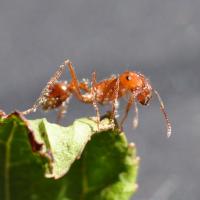Managing risk and increasing the robustness of invasive species eradication programs

Invasive species eradication programs can fail by applying management strategies that are not robust to potentially large but non-quantified risks. A more robust strategy can succeed over a larger range of possible values for non-quantified risk. This form of robustness analysis is often not undertaken in eradication program evaluations. The main non-quantified risk initially facing Australia’s fire ant eradication program was that the invasion had spread further than expected. Earlier consideration of this risk could have led to a more robust strategy involving a larger area managed in the program’s early stages. This strategy could potentially have achieved eradication at relatively low cost without significantly increasing known and quantified risks. Our findings demonstrate that focusing on known and quantifiable risks can increase the vulnerability of eradication programs to known but non-quantified risks. This highlights the importance of including robustness to potentially large but non-quantified risks as a mandatory criterion in evaluations of invasive species eradication programs.
Updated: 1 July 2024/Responsible Officer: Crawford Engagement/Page Contact: CAP Web Team











